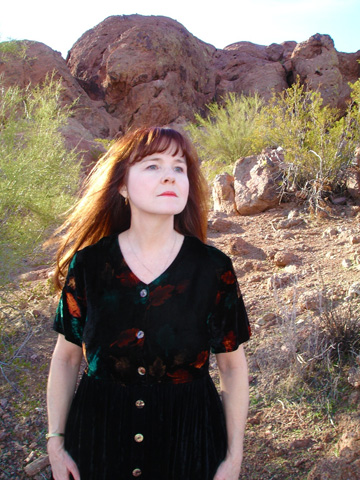Caveat Youngstor: Seniors don’t like to be called that name any more. And be careful what else you call them: They’re strong and increasingly strong in numbers. They’re living longer, working longer, raising grandchildren and actively participating in their communities as employees and active volunteers.

Icons of aging, Betty White and Morgan Freeman, host television shows and hawk products. Changing hair color isn’t the negative media image it once was, as marketers are discovering green in silver.
Preferred expressions are, perhaps, “older adults” and “Boomers” or maybe “Third Agers,” the last referring to post retirement when more Americans are revitalizing, even remaking their lives.
Third Agers don’t want descriptions conveying limitation, compartmentalization, paternalism, negativity or finality. They want terms on their terms: open-ended, vital, positive, empowering and full of possibilities. They want to grasp new opportunities their parents didn’t consider and their grandparents couldn’t comprehend.
“No boomer wants to be called a senior. They no longer see across-the-board age milestones as defining the aging process or accept the homogeneous concepts their parents did,” says Melanie Starns, M.A.G., assistant director of the Arizona Department of Economic Services — Division of Aging & Adult Services in Phoenix. “Instead, they are defining later life in terms of doing their own thing, of freedom and individuality.”
Baby Boomers are Rockin’ n' Rollin’
In describing themselves, today’s older Americans are reaffirming the themes that typified the ‘60s social revolution, led by post-World War II Baby Boomers: self-actualization, the celebration of choice rather than the acceptance of societal limitations, community involvement and volunteerism.
“We have an opportunity to redefine aging as a very positive experience and tear down the old barriers and misperceptions. We have to focus on the assets of aging and the value of people as they age,” says Sandy Markwood, chief executive officer of the National Association of Area Agencies on Aging (n4a) in Washington, D.C.
“Older Americans see themselves several decades younger than their chronological age,” adds Teri Kennedy, Ph.D., MSW, director of the Office of Gerontological Social Work Initiatives with the Arizona State University School of Social Work in Phoenix and Tucson. So, the often-heard numbers shift: 60 is the new 40 and 100 the new 80.
To students or groups she addresses Kennedy often describes this attitude shift in terms of two metaphors. “Remember Russian nesting dolls, each one successively smaller than the one before, fitting one into the other? Well, we see ourselves more like that: Our present includes all that has come before — with each successive doll representing a new age,” she says.
This perspective shift is also like stripping away an onion: “We peel away one layer and another appears, and each layer offers new ways to enjoy life and to participate more vibrantly,” continues Kennedy, who is also a member of the Social Work Core Faculty with the Arizona Geriatric Education Center through The University of Arizona, and Faculty and Visiting Scholar with The John A. Hartford Center of Geriatric Nursing Excellence at the ASU College of Nursing & Health Innovation.
“Our perception of aging has flipped on its head,” Markwood adds. “Aging once brought negative conceptions of being old and not being vital, of being frail and not active. Today, our conceptions of aging are much more positive and evolutionary, differing from one person to another as each approaches new life phases with vigor and purpose.”
Area Agencies on Aging were created by the Older Americans Act, she explains. The n4a represents the nation’s 650 Area Agencies on Aging and serves as a champion for the more than 240 Title VI Native American aging programs. Each has a director, such as, in Phoenix, Mary Lynn Kasunic, who plans and coordinates programs and services supporting the needs of older adults and caregivers.
As a national membership organization, n4a advocates for older adults and their caregivers, provides training and technical assistance to AAAs and Title VI programs and sponsors awards programs honoring older adults and exceptional aging programs.
“Aging is now more of a phase across a life span,” Markwood says. “Nowadays, there is no magic age when you become older. It’s a state of mind — and health.”
Hurdles of Health and Wealth
The number of adults 65 and older will double by 2030 and increase two and a half times by 2050, Kennedy notes, citing her Chapter 7, “Aging: The Changing Human-Services Needs of the Third Age” in Greater Phoenix Forward (2008).
In Arizona, the population 60 and more will increase from 17 to 25 percent between 2000 and 2020, and Arizonans 85-plus will increase by 102 percent over the same period, she adds.
In fact, Kennedy explains that the Arizona Department of Economic Security predicts a 21 percent increase in Maricopa County’s population among those 65 years and older between 2007 and 2012.
Still, as Kennedy, Starns and Markwood agree, health is pivotal: “With today’s medical care, the third of your life we once called old age is no longer one dimensional,” Starns says. “We are healthier and living longer, and that offers all of us great opportunities.”
Time was, 65 was the terminal age, the last stop: Beyond, and you were lucky. Today, our stronger health systems result from better nutrition, improved lifestyles and medicines. Later-life good health is attainable and maintainable.

Kennedy notes that this will, of course, make new demands on the human-services infrastructure for home and community-based services, behavioral health services and transportation resources. In general, health care is the central issue as to how we see ourselves as we age and defining aging, she emphasizes. Costs continue to grow and, as medical advances continue to extend lives, so will our choices: Who gets the transplants, the cell technologies, the medicines?
As a result, Starns stresses planning, both for health care and other costs associated with the opportunities of aging: travel, lifestyle, families. “Plan for 25 years longer than your parents did,” she recommends. “Think about needing not just one source of income, say, Social Security, but as many as three sources in order to handle the ups and downs of a long life.”
Rewirement the New Retirement
Fortunately, many Boomers are already heeding her: They’re consulting or already planning their lives after traditional retirement. “There are two interconnected trends for boomers,” Kennedy explains. “One trend is moving toward early retirement. The other trend, because they see aging differently and themselves in more vital terms, is that they are working beyond the traditional retirement age.”
She adds that 80 percent of Baby Boomers say they plan to continue working in some form past 65 — half for continued earnings and the other half to follow their passions. “I know people this age who had a list of things they wanted to do when they retired,” she adds.
Retirement was once an inevitable stage of life with a predictable plan and conclusion. But, as Kennedy points out, retirement is no longer a static event but a transitional life stage in which Third Agers seek new purpose to their lives. They rewire, retool, reformulate.
Communities and institutions are changing with then, such as so-called NORCs, Normally Occurring Retirement Communities, in which people continue to live in their homes and neighborhoods as they age rather than move into traditional senior-only developments.
Today’s senior centers, for example, are differently named and configured. “You will see fitness equipment, yoga spaces and computer rooms now,” Starns says. Health is still a focus, but it’s not so much health care as it is health improvement and vitality.
“Before, the centers were based on a system in which everything was set out for you: Here’s where you do puzzles or play pool, and everybody accepted it,” she continues. Today, she explains, older Americans, with Boomer finesse, are determining what their centers contain and what their goals are.
Traditionally, the senior center served lunch, provided entertainment, offered special interest classes and provided a safe environment for predominantly singles to socialize, explains Dan Taylor, who has been the CEO of East Valley Adult Resources in Mesa for 20 years.
Although they continue to provide these vital functions, they have expanded. Some, as those in Mesa and Apache Junction, are called “multigenerational centers” for intergenerational sharing, community building and fitness and health education opportunities for everyone, he adds.
The title “Senior Center” is disappearing, yielding to Active Adult Center, Wellness Center or just Center. In addition, the centers are partnering with local community college or universities for programs and offering many more volunteering opportunities, such as event planning and fund-raising, he says.
Taylor: “It will still be at least another five years before the boomers begin to exert their presence on active adult centers, and when that happens the ‘twist again, just like we did last summer’ begins.”
Third Agers are not only working longer for the added income and to rebirth themselves: They’re needed. Kennedy cites U.S. Bureau of Labor Statistics that, despite an increase in the unemployment rate for those 55 and older, as with every other market segment during the recession, the proportion of older adults either employed or looking for work has risen during the extended downturn.
Arizona, in particular, expects a shortage of qualified workers within the next five years. This offers extended employment to older Americans as well as, for forward-thinking companies, the opportunity to retain and solicit the knowledge and experience that older Americans uniquely provide.
“Through the Older Volunteers Enrich America Program that n4a administers for the MetLife Foundation, we have the privilege of recognizing incredible people doing incredible work,” Markwood says. “These are people in their 70s, 80s and 90s, and they’re making a huge difference in their communities,” Markwood says. “These are not ‘old people’ but vibrant people full of promise as they age.”
“Phoenix, the bird rising from its ashes, is a perfect image for this age transformation,” Kennedy adds. “It’s a place for a new beginning. We’ve got people with knowledge who can make incredible contributions and help solve the complex problems we are all facing. As a community, we have to grasp this opportunity as people reach not the end of life but its zenith.”